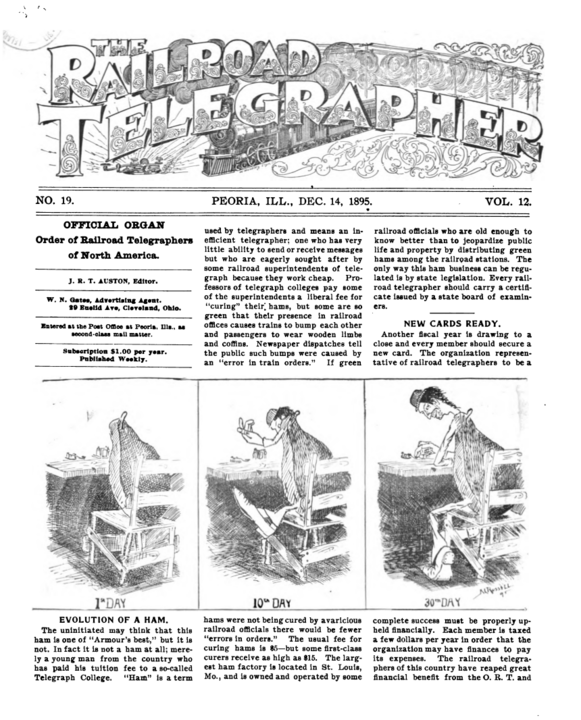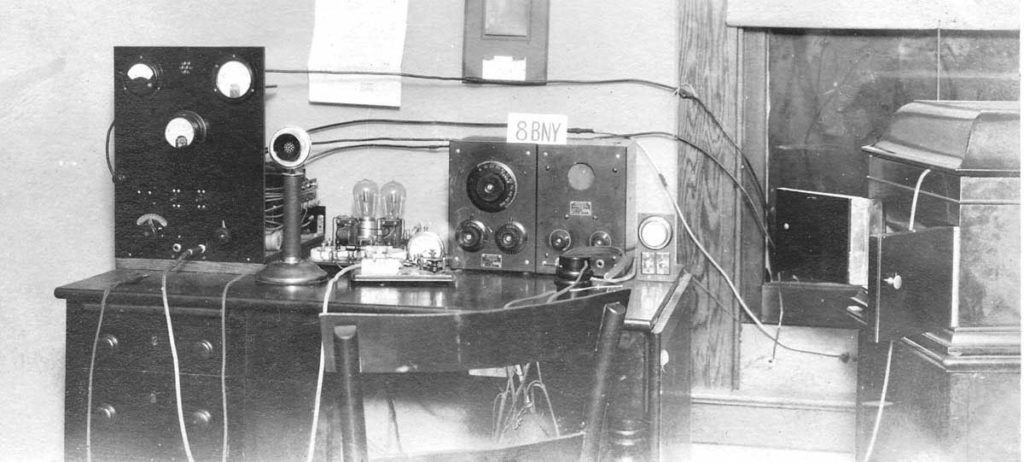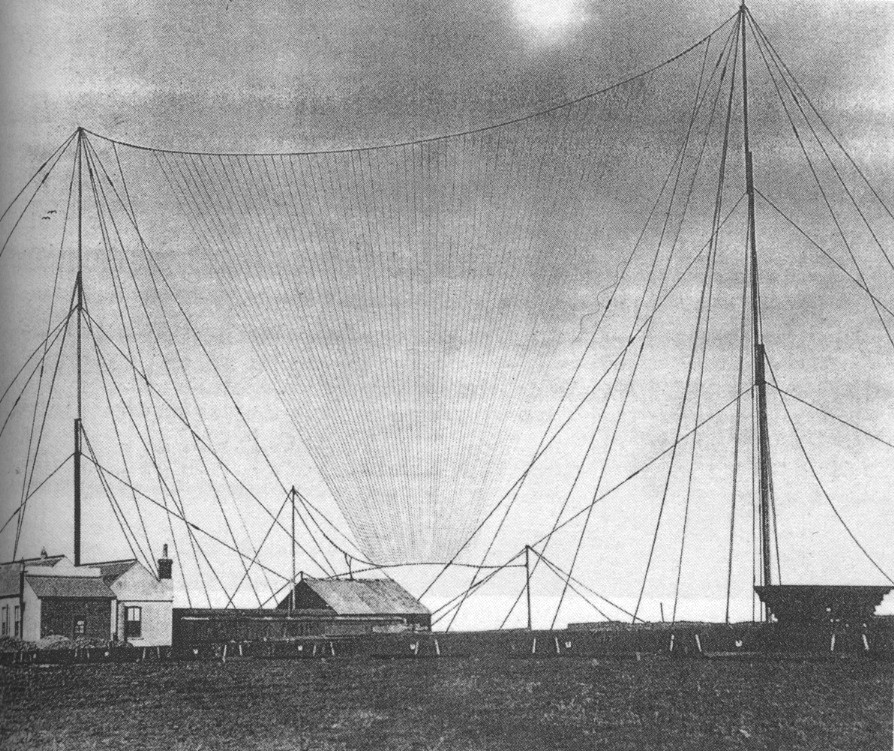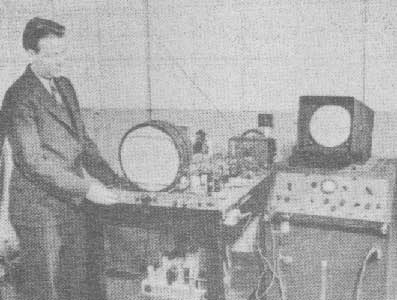The stories here talk about the origin of the term "HAM" to describe Amateur Radio operators.
Though these stories are considered apocryphal they may contain a kernel of truth and are here for entertainment purposes. You make up your own mind.
Thanks to Wikipedia for most of this material. Enjoy.

Ham radio is a popular term for amateur radio, derived from "ham" as an informal name for an amateur radio operator. The use first appeared in the United States during the opening decade of the 20th century—for example, in 1909, Robert A. Morton reported overhearing an amateur radio transmission which included the comment: "Say, do you know the fellow who is putting up a new station out your way? I think he is a ham."
However, the term did not gain widespread usage in the United States until around 1920, after which it slowly spread to other English-speaking countries. By 1901, the terms "ham" and "plug" were used by landline telegraphers to describe an operator "who lacks ability" or who had poor or "ham fisted" skills. In the 1890s it was alleged that railroads were employing telegraph operators who were negligent or incompetent. These unskilled operators were described as either drinking alcohol while working, irresponsible teenage boys, or merely having very little ability. Their miscommunication was blamed for causing severe train wrecks. Railroad executives during this era were also accused of hiring unskilled operators to save money and were said to be accepting bribes from telegraph schools to hire unqualified students. These disreputable telegraph schools were referred to as "ham factories."

Early radio (initially known as wireless telegraphy) included many former wire telegraph operators, and within the new service "ham" was employed as a pejorative term by professional radiotelegraph operators to suggest that amateur enthusiasts were unskilled. In "Floods and Wireless" by Hanby Carver, from the August 1915 Technical World Magazine, the author noted "Then someone thought of the 'hams'. This is the name that the commercial wireless service has given to amateur operators..."
This pejorative usage continued into at least 1940, as evidenced in the January 1940 issue of The APCO Bulletin, where it was written "Rumors of citations by the FCC for violation of the superfluous traffic regulation on the part of certain of our radiotelegraph stations have resulted in a sudden decrease in 'hamming' on the police frequencies...".
Even among amateur radio operators, the term was used pejoratively at first by serious experimenters. For example, in December 1916 QST magazine, an amateur operator working on long distance message passing describes one way to avoid interference was to send messages "...on Thursday nights, when the children and spark coil 'hams' are tucked up in bed" (a spark coil was an unsophisticated radio transmitter, made from an automobile ignition coil, that produced noisy interference).
But only a few months later, in an indication of the changing use of the term among amateurs, a QST writer uses it in a clearly complimentary manner, saying that a particular 16-year-old amateur operator "...is the equal of a ham gaining five years of experience by hard luck."

Use of "ham" as a slur by professionals continued, however. A letter from a Western Union Telegraph Company employee, printed in the December 1919 edition QST, showed familiarity with the word's negative connotations, expressing concern that "Many unknowing land wire telegraphers, hearing the word 'amateur' applied to men connected with wireless, regard him as a 'ham' or 'lid'".
But many other amateurs increasingly adopted the word "ham" to describe their hobby and themselves during this period, embracing the word that was originally an insult, similar to the way Yankee Doodle evolved, as seen, for example, in Thomas F. Hunter's exuberant "I am the wandering Ham" from the January 1920 issue of QST.
Other Versions:
A number of folk etymologies about the supposed origin of "ham" evolved over the years.
"A little station called HAM"

This widely circulated but fanciful tale claims that, around 1911, an impassioned speech made by Harvard University student Albert Hyman to the United States Congress, in support of amateur radio operators, turned the tide and helped defeat a bill that would have ended amateur radio activity entirely by assigning the entire radio spectrum to the military. An amateur station that Hyman supposedly shared with Bob Almy and Peggie Murray, which was said to be using the self-assigned call sign HAM (short for Hyman-Almy-Murray), thus came to represent all of amateur radio. However, this story seems to have first surfaced in 1948, and practically none of the facts in the account check out, including the existence of "a little station called HAM" in the first place.
The 1909 Wireless Registry in the May edition of Modern Electrics listed Earl C. Hawkins of Minneapolis, Minnesota, as operating with the callsign "H.A.M." according to the Wireless Association of America.
Home Amateur Mechanic magazine
In this version, supposedly HAM was an acronym derived from the initials of a "very popular" magazine which covered radio extensively. However, there is no evidence of a magazine existing by this name.
Hertz-Armstrong-Marconi
It is sometimes claimed that HAM came from the first letter from the last names of three radio pioneers: Heinrich Rudolf Hertz, Edwin Armstrong, and Guglielmo Marconi. However, this cannot be the source of the term as Armstrong was an unknown college student when the term first appeared.
Hammarlund legend
Likely an example of corporate wishful thinking, Hammarlund products were supposedly so preeminent in the pioneering era of radio that they became a part of the language of radio. As the story goes, early radio enthusiasts affectionately referred to Hammarlund products as "Ham" products, and called themselves "Ham" operators. In truth, Hammarlund was a minor and barely known company at the time "ham" started to be used.
